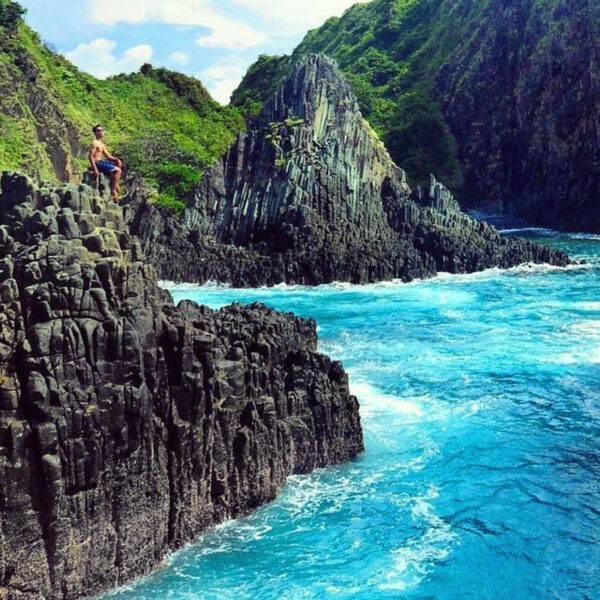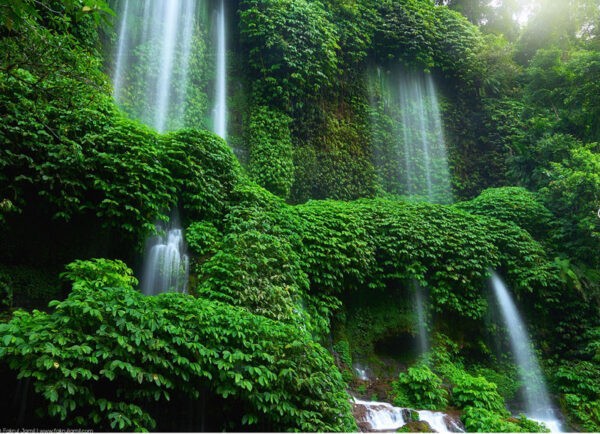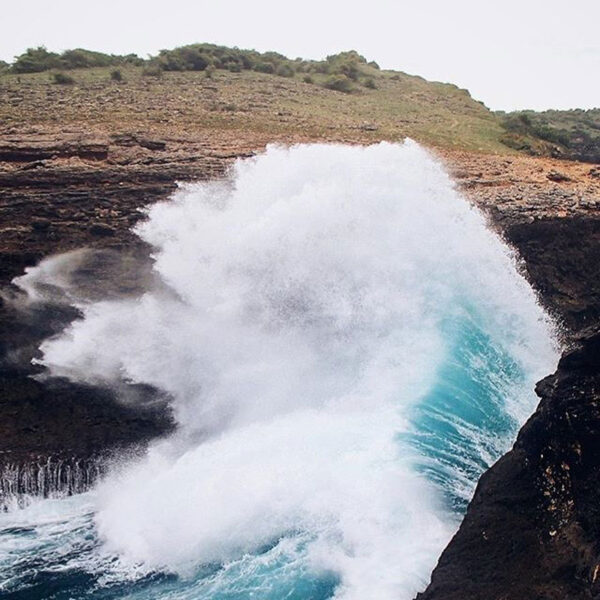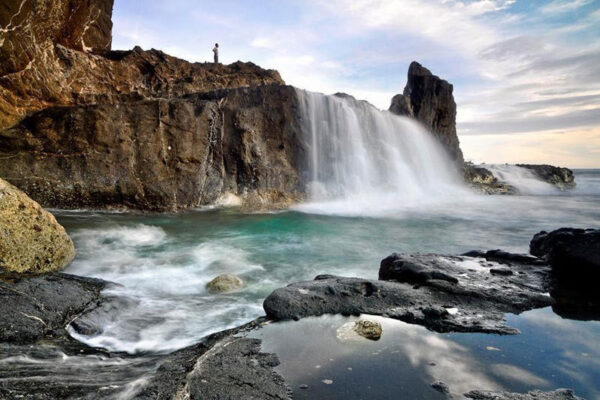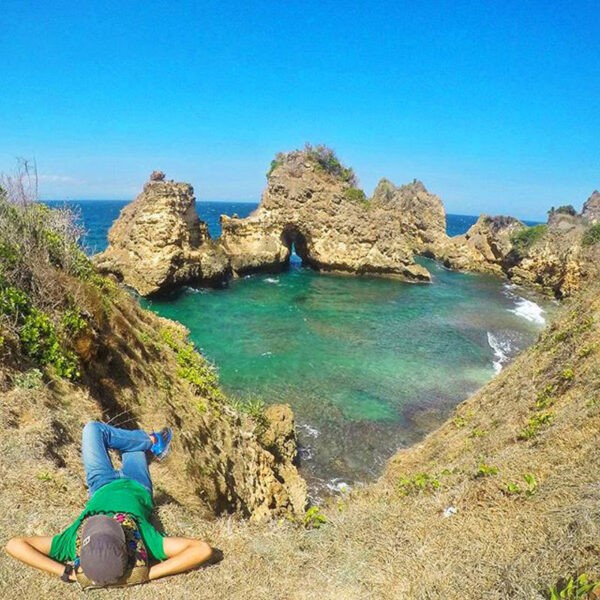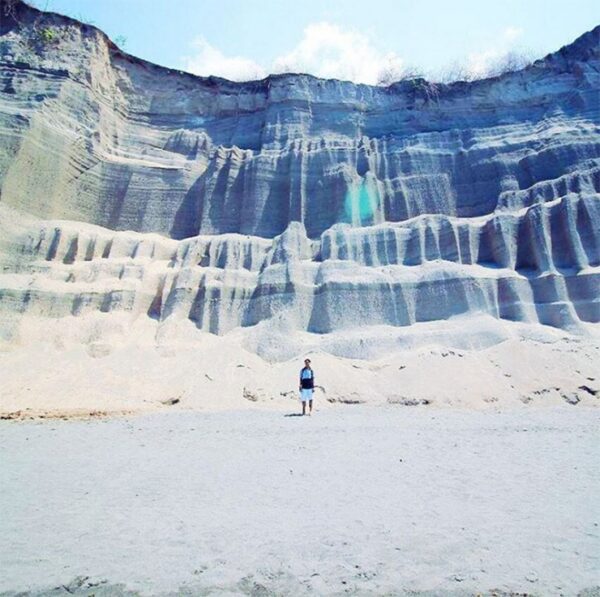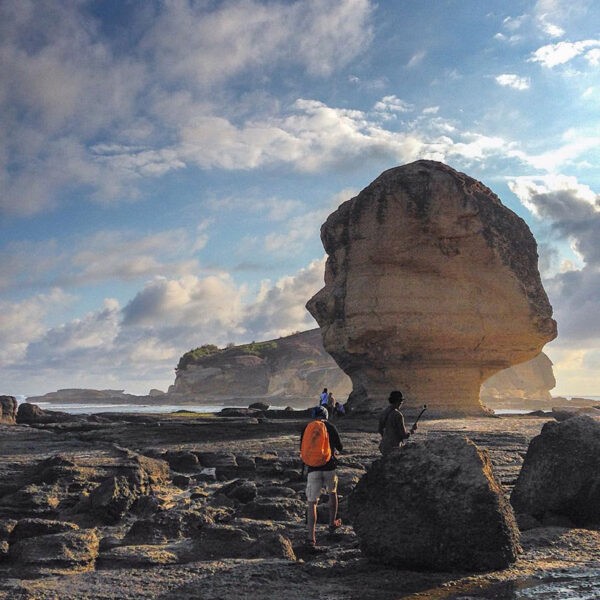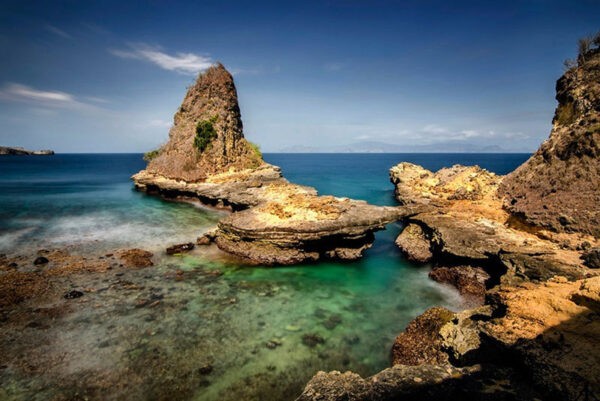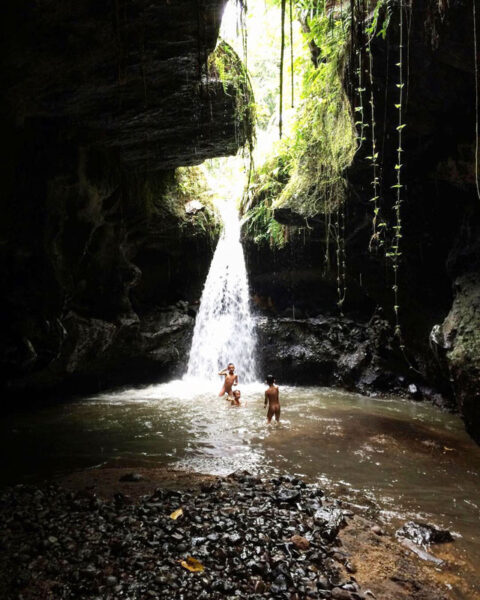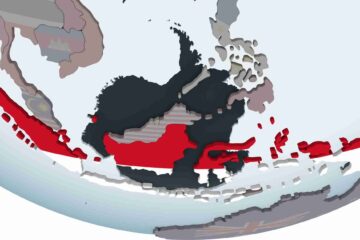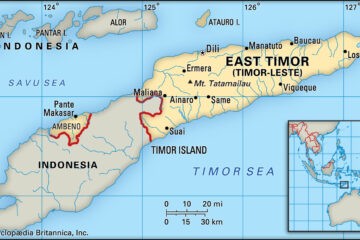Sumbawa Island
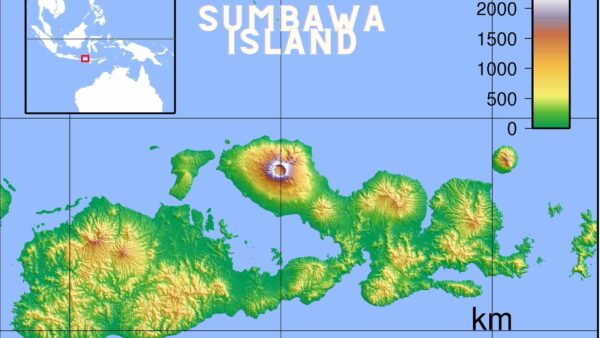
What changes you will find across that short stretch of ocean. Sumba was a limestone island, with the population split between the religions of Marapu Animism, Dutch Calvinism, and Roman Catholicism. Sumbawa is the ultimate volcanic island and totally Moslem.
During the 170 kilometer crossing of Sumbawa you will be virtually in the shadow of a 9,400 foot volcano named Tambora. Not nearly as large of a shadow as it was before 1815, when Tambora towered 14,100 feet .

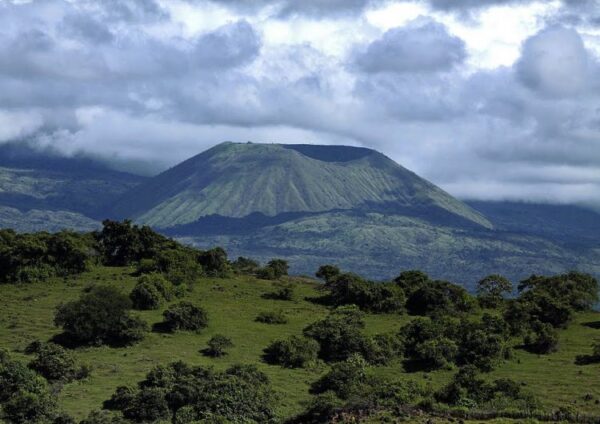
After several centuries of dormancy, Tambora began to awaken after 1810. There was a small eruption in 1812, and another April 5 of 1815. The April 1815 eruption was followed by detonation sounds heard up to 1500 kilometers away. But that was just the beginning. On April 6 ash began to fall across a wide area, and the detonation sounds, albeit not at the previous volume, continued thru April 10 when they began to intensify. At 1900 hours the eruption ramped up dramatically with loud explosions and columns of flame, until the entire top of the mountain was; “a flowing mass of liquid fire”. Then the whole thing collapsed into pyroclastic flows in all directions, completely wiping out the villages on the sides of the mountain.
For 11 days the mountain alternately exploded ash and pumice and disgorged pyroclastic flows, before it gradually settled down. Explosions continued until mid July, and smoke continued to rise through August. Occasional tremors and flames lasted for four more years.
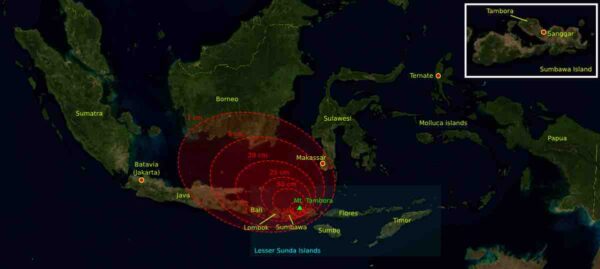
Altho it did not match the single explosion of some other eruptions (the loudest were only heard up to 2600 kilometers away), Tambora was cumulatively the most powerful and impactful eruption in recorded history. An estimated 24 cubic miles of material was ejected during the course of the eruption. Between 70,000 and 100,000 Indonesians died in the eruption and its aftermath. The entire island was denuded of vegetation, which was found floating in the ocean in rafts up to 3 miles across, and as far away as Calcutta. An eyewitness account of the aftermath of the Tambora eruption:
“On my trip towards the western part of the island, I passed through nearly the whole of Dompo and a considerable part of Bima. The extreme misery to which the inhabitants have been reduced is shocking to behold. There were still on the road side the remains of several corpses, and the marks of where many others had been interred: the villages almost entirely deserted and the houses fallen down, the surviving inhabitants having dispersed in search of food.
…
Since the eruption, a violent diarrhoea has prevailed in Bima, Dompo, and Sang’ir, which has carried off a great number of people. It is supposed by the natives to have been caused by drinking water which has been impregnated with ashes; and horses have also died, in great numbers, from a similar complaint.”
—Lt. Philips, ordered by Stamford Rafflles to go to Sumbawa
But the effects of Tambora did not end there. Up top 120 million tons of suphur were blasted into the stratosphere, creating global climate anomalies that lasted for months, or even years. Bizarre sunset colours were reported all the next fall. The next spring and summer a sulfate aerosol veil obscured the sky. It was described as looking like a dry fog, and not being dispersed by rain or wind. It reddened and dimmed sunlight to such an extent that sunspots could be seen with the naked eye. It also blocked out the sun’s heat, creating in 1816 “the year without a summer.”

Snowfall persisted into May and June; blue, brown, and yellow snow, due to the volcanic residue in the atmosphere. There was still river ice as far south as Pennsylvania into August. Massachusetts had severe frosts every month of the year. The combination of cold temperatures and reduced light caused crop failures and famine around the world. Frosts coming well into the summer killed planted crops, and frosts as early as August ruined crops not ready to harvest. While farmers in the western world managed to bring in some crops, the harvest was so poor that prices were as much as 10 times normal, and in the damp and cold conditions many crops were unusable even for animal feed.
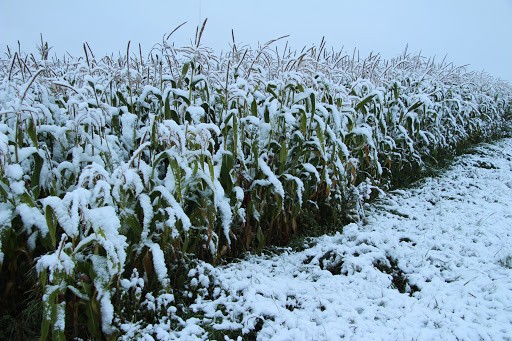
There were food riots in Europe and a disrupted monsoon season came late and extra heavy in Asia, causing heavy flooding and even more casualties. The true human toll of Tambora might well be in the millions. If we had a similar catastrophic eruption today, it is hard to imagine the effects, except it is worth noting that Japan, which had been stung by similar weather disasters in the past, was prepared and made it through the summer of 1816 without a starving populous.
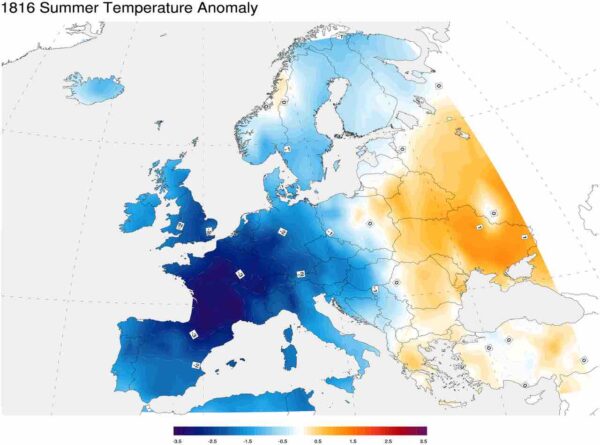
It might come as a surprise to find out that the “Slow Boat” to Sumba to Sumbawa only travels twice a week; but, when you consider the cultural gulf that exists between the two, maybe not so much surprised. If you are not fortunate enough to arrive at the right time for the “Slow Boat”, “Fast Boat” service between islands is a common form of tourist transportation, especially to the many small islands.
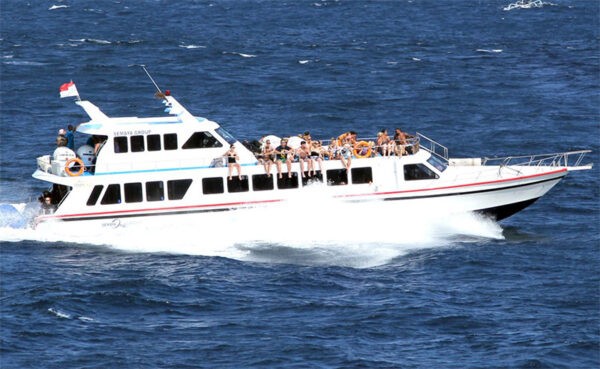
If you take the fast boat, it will set you right out on the beach, so you can start out with sand in your shoes. Either way, you will climb quickly up into low hills as you cross the island to the north side of the island. . You won’t have any huge climbs, as the highest you reach is only about 400 feet above sea level, and you only hit that a couple of times in the first 80 kilometers, then you drop down to run on or near the coast all the way to Labuhan to catch the next ferry to Lombock Island. Your total journey across Sumbawa is only 170 kilometers.
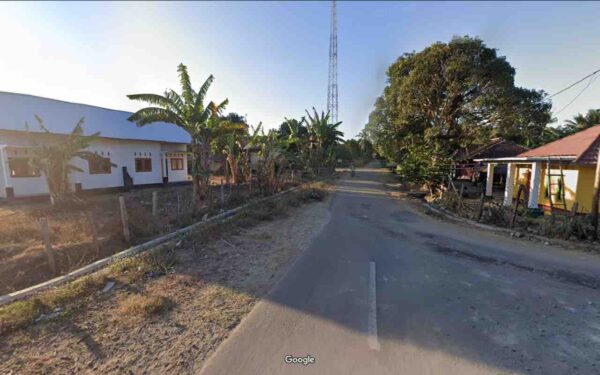
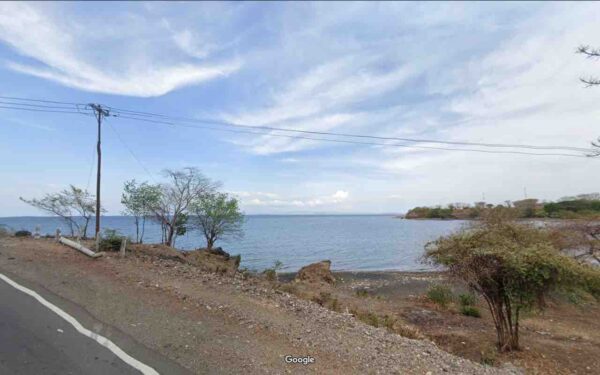
By now you have surely noticed that in spite of the narrow roadways, Indonesia is heaven for running on the roads. And why is that? It is because Indonesia is motorcycle heaven. Why are there so many motorcycles? There is a combination of factors. Obviously a motorcycle is less expensive than a car. In a country where winter is not a season (or even fall) riding a motorcycle is possible all year round. And lastly, Indonesia has no public transportation system. For an Indonesian, the motorcycle is the only way to have mobility. Some numbers of interest (as if you have not already gotten the idea by observation): In the US there are 275 million cars and 8 million motorcycles; In Indonesia there are 115 million motorcycles and less than a million cars.
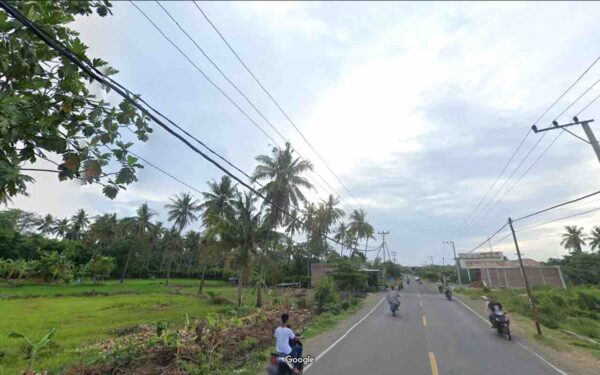
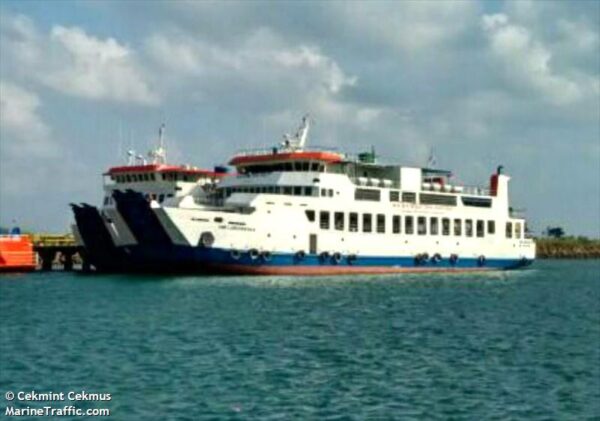
Lombok Island
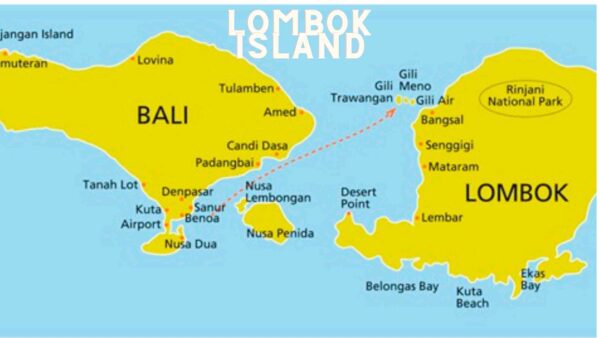
Arriving on Lombok, you have to figure that Indonesia is out of surprises. Every island cannot possibly be unique. That is probably true, but Lombok is a whole different place. It is the apostrophe between Asia and Austalanesia. This is the last island to feature “Australian” fauna, with the Asian fauna starting in Bali. This seems an odd coincidence, considering that Bali and Lombok are only separated by 35 km of ocean, and the fauna of Asia and Australanesia are spread across islands separated by much wider stretches of water. The difference is that the ocean floor is much lower along the Wallace line, and when the sea level was lower, all the islands were interconnected west of the lion and east of the line, but the line itself remained open-ocean and most mammals did not cross it. Even most birds did not cross it.
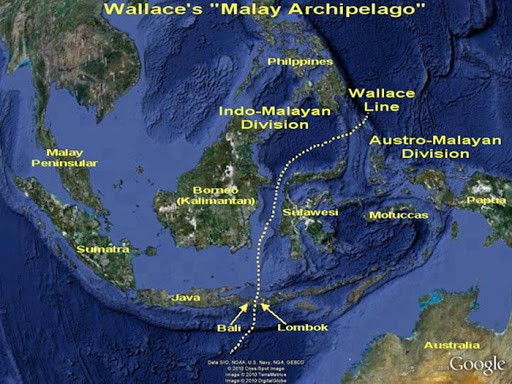
The human connections are very different. Whereas the Subawa to Lombok ferry only ran two days a week, probably necessitating the hiring of a fastboat to make the island hop, the ferry from Lombok to Bali runs hourly, every day. As a matter of fact, the demand is so high that you can even save some Rupiah by taking the budget ferry. (There are about 15,000 rupiah to the dollar)
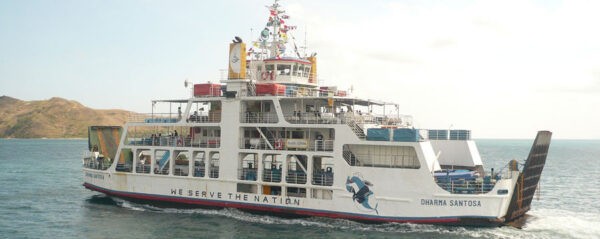
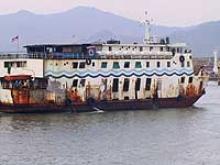
Being a curious person, I am sure you are wondering why there are such close ties with Bali, and not with Sumbawa, since they are about the same distance apart. The first thing that comes to mind would be religion. You already saw that Sumbawa was an island of Christians and animists, while Lombok is Moslem. Bali must be Moslem as well?
No, that is not it at all. Bali is the last of the major islands to have a Hindu majority. While the other islands were gradually being united into fewer and larger kingdoms, Lombok continued to be ruled by the perpetually feuding Sasak chiefs of the individual villages. During the late 1600’s the Balinese took advantage of this situation and conquered the western half of Lombok. Meanwhile, the Makassars from Sulawesi had established colonies in Sumbawa and took over the eastern half of Lombok. By 1750 the Balinese had driven out the Makassars, and ruled over the entirety of Lombok.
While the Balinese integrated and intermarried in the west, in eastern Lombok they ruled from forts. The rule was not without its peasant rebellions, and in 1898 the rebellious Sasak asked the Dutch to intervene on their behalf. A force of only 250 Dutch, with the assistance of the Sasak and some clever diplomacy, managed to take control of Lombok, which they then annexed into Dutch East India. None the less, the Dutch are still looked on as liberators. Lombok was not finished with being conquered, tho. The Japanese took control from the Dutch during WW II, and after Japan was defeated, the Dutch moved back in. Them the Dutch had to leave after Indonesia achieved independence, and the Balinese moved back in.
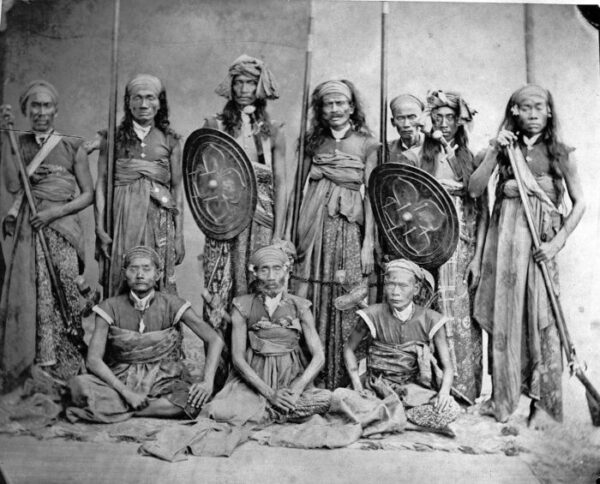
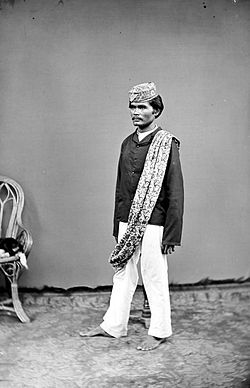
Naturally, for an Indonesian Island to cover all the bases, there has to be a volcano. Preferably, that volcano would have changed the climate of the earth for at least a year or two. When you look at the satellite view of Lombok, there isn’t any question where that volcano is. As a matter of fact, it would seem the entire island is really just one big volcano. The crater left by the eruption is now filled by 45 square kilometer, 750 foot deep Lake Segara Anak.

On one side, like a pimple, is the newer volcano, Rinjani. They call the big one Samalas, and it erupted in 1257. The only record of it is a document called the Babad Lombok, written on palm leaves. We don’t have the kind of blow by blow description that we have for the newer catastrophic volcanic eruptions, but we know the pyroclastic flows were so severe that they reached Sumbawa Island. Based on what we do know, Samalas was one of the largest eruptions of the past 12,000 years. Samalas is/was the most powerful volcano we will pass.
Modern scientists studying ice cores determined that there was a catastrophic volcanic eruption “somewhere” in the world in 1257. It was bad enough to help kick off the period known as the “Little Ice Age” that lasted until the 1860’s. In 2013, by studying historical records, that volcanic eruption was traced to Samalas.
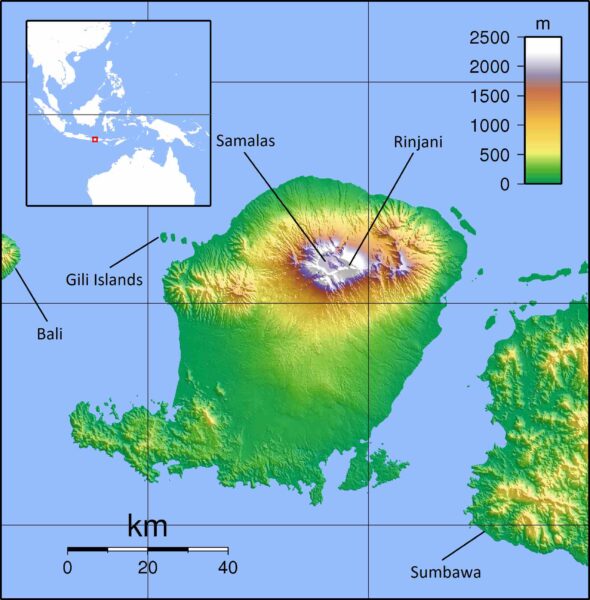
There is one other thing to add before you get on the “discount ferry” to Bali. Your trip across Lombok is only 90 kilometers long, and it will much resemble the other Islands you have crossed, if you only stay on the road. Basically, you will start at the sea and gradually climb to your high point of 1237 feet at just past the midpoint, and then drop back down to sea level to meet the ferry,
However, if you do not make time for a few side trips on your way across, you will have wasted an opportunity. Lombok may not be as famous as some of the other islands, but from its tortured volcanic origins, sculpted by wind and water, Lombok has some of the most spectacular natural formations you are going to pass. Even by the standards of the exotically beautiful islands of Indonesia, Lombok is special. I have included a few pictures, just to give you an idea what you do not want to miss!
